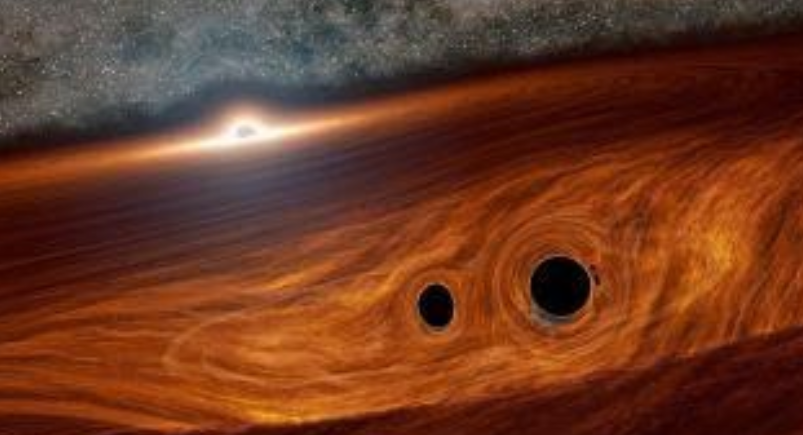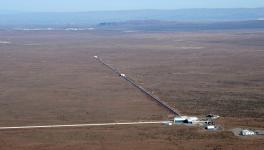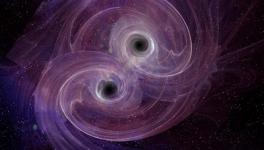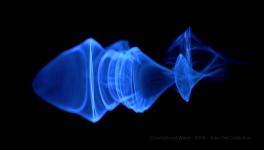Light From Black Hole Collisions Detected for First Time

Image Courtesy: Space.com
Black holes are known to swirl around each other and then undergo a violent coalescence, and in this process, they send ripples in space and time, a kind of disruption in the space time co-ordinate. But, collision between two black holes, the giants in the space, has not been known to emanate light till now. A recent observation of such a violent collision in the space has been reported to have emitted light for the first time in history of astronomy. It was published in the journal Physical Review Letter.
Researchers are of the notion that the black holes may have been in the just right place at the right time, enabling them to observe the flare of light. The research team consisted of scientists from the Graduate Centre CUNY, Zwicky Transient Facility (ZTF) of Caltech, Borough of Manhattan Community College (BMCC) and the American Museum of Natural History (AMNH). The extraordinary event has been named as S190521g. It was first identified by the Laser Interferometer Gravitational Wave Observatory (LIGO) of the National Science Foundation (NSF) along with the European Virgo Detector on May 21, 2019. Thereafter, scientists at ZTF analysed the recordings and found what could be the flare of light emanating from the Black Hole Collisions.
But what could explain the flare of light coming out of the collision of the giants? Professor Ford, co-author of the study and is associated with BMCC and AMNH, said, “At the centre of most galaxies lurks a supermassive black hole. It's surrounded by a swarm of stars and dead stars, including black holes. These objects swarm like angry bees around the monstrous queen bee at the centre. They can briefly find gravitational partners and pair up but usually lose their partners quickly to the mad dance. But in a supermassive black hole's disk, the flowing gas converts the mosh pit of the swarm to a classical minuet, organising the black holes so they can pair up.”
The gas on the disk of a black hole may be responsible for producing the light. Regarding this, another co-author McKernan explained, “Once the black holes merge, the new, now-larger black hole experiences a kick that sends it off in a random direction, and it plows through the gas in the disk. It is the reaction of the gas to this speeding bullet that creates a bright flare, visible with telescopes.” Professor McKernan belongs to BMCC and AMNH.
When two black holes collide, it creates gravitational waves by swirling space and time. And the light flare was predicted to begin within days or week right after the first ripples of gravitational waves. Probably, that was the reason the ZTF did not observe the flares of light at the beginning, but when it looked back at its earlier images they could trace the flare that started after days of the first ripples of the gravitational waves of May 2019 occurred after the collision.
The researchers also attempted to have a more detailed look at the flares, a spectrum. But, they could not as the light faded before they could trace it. Observing the spectrum would have strengthened the idea that the light was due to merging of two black holes within the gaseous disk of a supermassive black hole. However, they said that they could rule out other possibilities of emergence of the light, like a supernova.
Get the latest reports & analysis with people's perspective on Protests, movements & deep analytical videos, discussions of the current affairs in your Telegram app. Subscribe to NewsClick's Telegram channel & get Real-Time updates on stories, as they get published on our website.


















